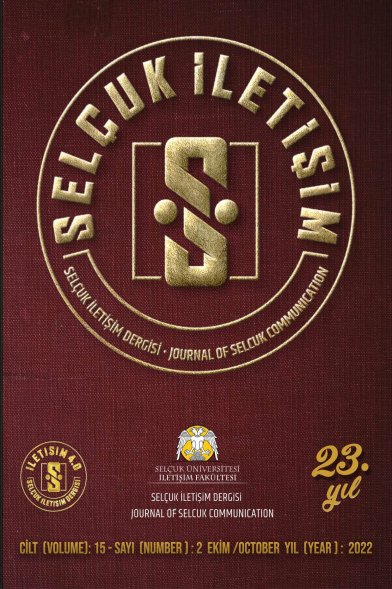Interpersonal Communication Through The Internet
Internet; interpersonal relationships; technology
___
- Alexander M J (1999), Armchair Activists: The News Journalism on the Internet, Vital Speeches, 66(1), pp. 30-33.
- Cooper A and Sportotari L (1997), Romance in Cyberspace: Understanding Online Attraction, Journal of Sex Education and Therapy, 24, pp. 7-17.
- Engelman J L (1996), Interacting on the Internet, Times Mirror Higher Education Group, USA.
- Flanagin J A and Metzger, J M (2000), Perceptions of Internet Information Credibility, Journalism & Mass Communication Quarterly, 77 (3) pp. 515-540.
- Gavin J (2002), Romances that Start on the Internet May Last Longer, Researcher Says, The Chronicle of Higher Education, 48 (33), p. A35.
- Globus S (2002), The Good the Bad and the Internet, Current Health 2, 28 (6), pp. 13-15.
- Graham G (1999), The Internet: A Philosophical Inquiry, Routledge, London.
- Griffiths M (2001), Sex on the Internet: Observations and Implications for Internet Sex Addiction, Journal of Sex Research, 38 (4), pp. 333-343.
- Harasim M L (1994), Global Networks: Computers and International Communication, MIT Press, USA.
- Jackson A L & et. al. (2001), Gender and the Internet: Women Communicating and Men Searching, Sex Roles, 44 (5/6), pp. 363-379.
- Koku A & et. all. (2001), Netting Scholars: Online and Offline, The American Behavioral Scientist, 44 (10), pp. 1752-1774.
- Leiner M B& et. al (2003) All About the Internet: A Brief History of the Internet, Internet Society, (Online) http://www.isoc.org/interacthistory/brief.html, (February 23, 2003).
- McMillan J S (2000), The Microscope and the Moving Target: The Challenge of Applying Content Analysis to the World Wide Web, Journalism & Mass Communication Quarterly, 77 (1), pp. 80-98.
- Merkle R E and Richardson A R (2000), Digital Dating and Virtual Relating: Conceptualizing Computer Mediated Romantic Relationships, Family Relations, 49 (2), pp. 187-192.
- Prat L & et. al. (1999), Interrogative Strategies and Information Exchange in ComputerMediated Communication, Communication Quarterly, 47 (1), pp. 46-66.
- Rheingold H (2001), The Virtual Community, David Trend (ed), Reading Digital Cultures, Blackwell Publishers, Great Britain.
- Scramaglia R (2002), Love and the Web, Interdisciplinary Journal of Academia Europea, Cambridge University Press, 10 (3), pp. 317337.
- Shields R (1996), Culture of Internet: Virtual Spaces, Real Histories, Living Bodies, Sage Publications, London.
- Waskul D and Douglass M (1997), Cyberself: The Emergence of Self in On-line Chat, Information Society, 13 (4), pp. 375-398.
- Wildermuth M S (2001), Love on the Line: Participants’ Descriptions of ComputerMediated Close Relationships, Communication Quarterly, 49 (2), pp. 89-95.
- Wolak J & et. all (2002), Close Online Relationships in a National Sample of Adolescents, Adolescence, 37 (147), pp. 441-456.
- Yayın Aralığı: 2
- Başlangıç: 1999
- Yayıncı: Selçuk Üniversitesi İletişim Fakültesi
1980 Sonrası Türk Basını, Türk Siyasi Hayatı ve Basın-Siyaset İlişkisi
Araştırmalarda Veri Toplamaya ve Bulgulara Etki Eden Kirletilmiş Bilinç Üzerine Bir İnceleme
Nazmiye ERDOĞAN, İrfan ERDOĞAN
İnternet Haberciliği ve Aktif İzlerkitle İlişkisi Çerçevesinde Etik Tartışmalar
İnternet ve Demokrasinin Geleceği
Görsel / İşitsel Bir Dil: Video Klip
Gazetelerde Görsel Tasarım Yanlılığı
Improving Children's Communicative Competence and Performance Through Storytelling Model
